What to Eat in Madrid: 10 Treats You Should Not Miss
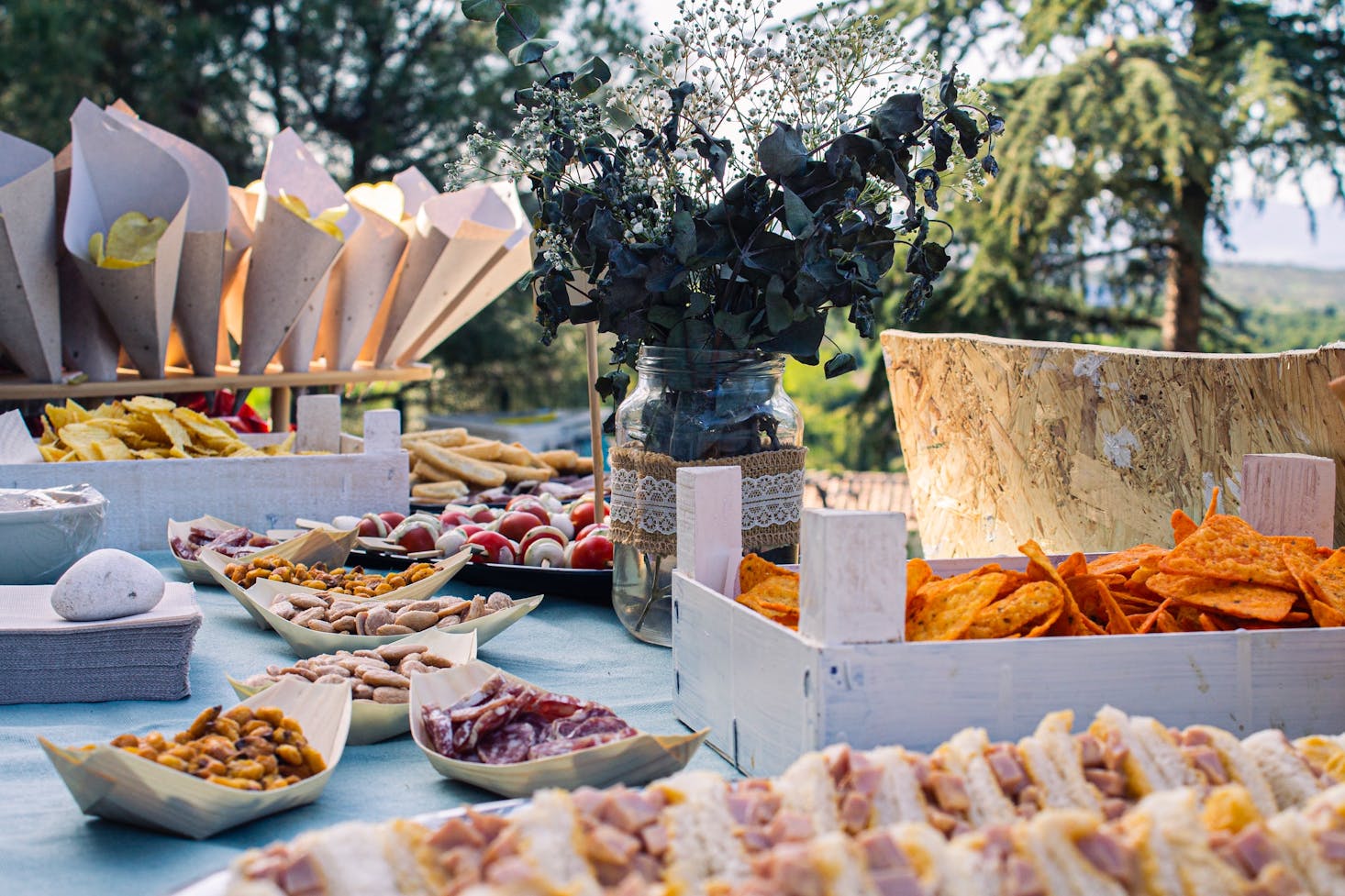
Madrid is undoubtedly one of Europe's most exciting travel destinations, with its legendary nightlife, booming architecture, and rich culinary traditions. It boasts expansive parks, boulevards, and busy streets lined with shops, restaurants, cafes, and endless vendors, tapas, and cocktail bars to explore, like Del Diego Cocktail bar. There are also vegetarian restaurants in Madrid with creative dishes that even meat lovers enjoy.
Head to Mercado de San Miguel in the heart of the Spanish capital, next to Plaza Mayor. It’s a monument to Spanish cuisine, offering local food, world-class delicacies, and some of the best street food in Madrid. It also has numerous food stalls; each sells something different to suit every taste and preference.
A short walk from the food market is Puerta del Sol, a public square and one of the busiest places in the city. Besides its famous clock, this bustling square will give you an exciting culinary adventure surrounded by bars, cafes, and restaurants offering modern and traditional dishes at a competitive price. Whether you’re looking for upscale or informal dining, it offers a one-of-a-kind experience for locals and visitors.
If you're wondering what to eat in Madrid, try some of its most famous treats like callos a la madrileña or the classic bocadillo de calamares and eat like a local. But before trying the city’s gastronomic gems, drop off your bags at a luggage storage facility in Madrid. That way, you can go to as many places as you want and enjoy a food tour without hassle.

Love discounts and traveling?
Sign up for our newsletter and get 10% off your next booking.

Madrid Food: Huevos rotos
Start your day with a simple and inexpensive egg dish, huevos rotos, or broken eggs. It’s a specialty in Madrid consisting of eggs fried in olive oil and placed on top of French fries. Traditionally, it is topped with seafood, chorizo pieces, or some slices of Iberian ham. However, you can put virtually any seafood or meat you can dig through your refrigerator to serve it with or as a topping.
While huevos rotos is common in Madrid, its origin is quite unclear. Some sources reveal that it may originate from the Canary Islands, but its roots date back to the early 1800s. The Spanish take credit for serving fried eggs over potatoes, but the dish could have Caribbean or Latin American roots, as well.
You can find huevos rotos at any restaurant in Madrid. Every Spanish restaurant may have its own twist on this traditional dish, so sample everywhere until you find the perfect style that pleases your palate. But if you want to taste some of the best huevos rotos in the city, go to Los Huevos de Lucio, a small tavern-like classic restaurant in the La Latina district.
Madrid Food: Tortilla Española
When you think of tortillas, it’s common to associate them with the round, thin, flat bread made from wheat flour or cornmeal. But the tortilla that comes from Spain is different from the thin flour shells for your taco or other Mexican dishes.
Tortilla Española, or Spanish tortilla (Spanish omelette), is a famous traditional dish found at nearly any establishment though presented in different ways. It’s basically a potato omelet with eggs and potatoes as the main ingredients. You can eat it as a main dish or serve it with a light afternoon snack while waiting for dinner, in small pieces like a tapa or in a sandwich.
Like most recipes, the tortilla Española has become like a canvas you can build on to create more elaborate and complex flavors. Many Spanish regions have their own version of the classic dish, but the most popular one is the chorizo version. It provides more protein and has a spicier taste. You can also add any protein, like fish, meat, or cheese, and vegetables to customize your experience.
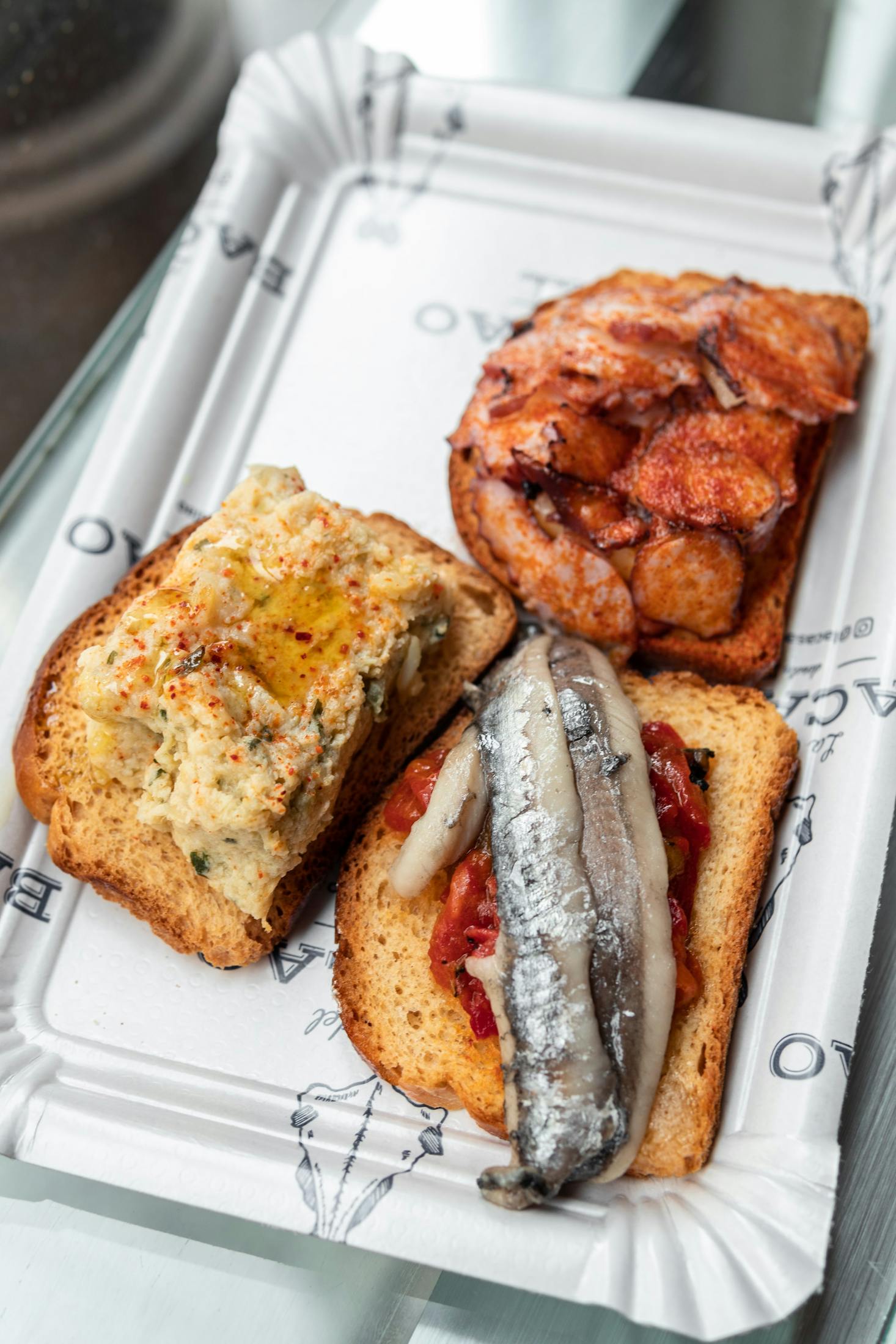
Madrid Food: Bocadillo de Calamares
One of the best foods in Madrid you need to try before leaving is bocadillo de calamares or squid sandwich. It often consists of a Spanish-style baguette known as barra de pan, sliced in half and stuffed with crunchy deed-fried calamari rings. It's a staple bar snack that goes well with an ice cold beer and is one of the most beloved sandwiches in the city capital.
Visiting Madrid and not trying a calamari sandwich is missing out on an authentic culinary experience. You can have it as an afternoon snack, breakfast, lunch, or dinner. It’s easy to make at home, but you must sample it first at one of the bars around the city center. Blend in with the locals by eating it standing in a cozy bar, or look for a bench and enjoy it outside.
Madrid Food: Callos a la Madrileña
Arguably the most celebrated traditional dish in Madrid, Callos a la Madrileña (Madrid-style tripe) is a local cuisine made from tripe, chorizo, ham, and morcilla or blood sausage. The ingredients are cooked in a broth with paprika, tomato sauce, garlic, onions, and other ingredients like parsley and bay leaves for extra flavor.
Its main ingredient is beef tripe, often added with snouts, black pudding, and hooves. Though it isn’t to everyone’s tastes, it’s a local cuisine you should eat in Madrid or at least try once. It’s a hearty dish many people enjoy throughout the winter.
According to current regulations, the tripe or other similar cuts should be cleaned for 24 hours until they’re fit for human consumption. It is washed and boiled repeatedly, slowly cooked, and combined with different seasonings for more flavor. This dish isn’t difficult to make, but the entire cooking and preparation process makes it arduous for home cooks. That’s why most Madrileños eat it in restaurants or on special occasions.
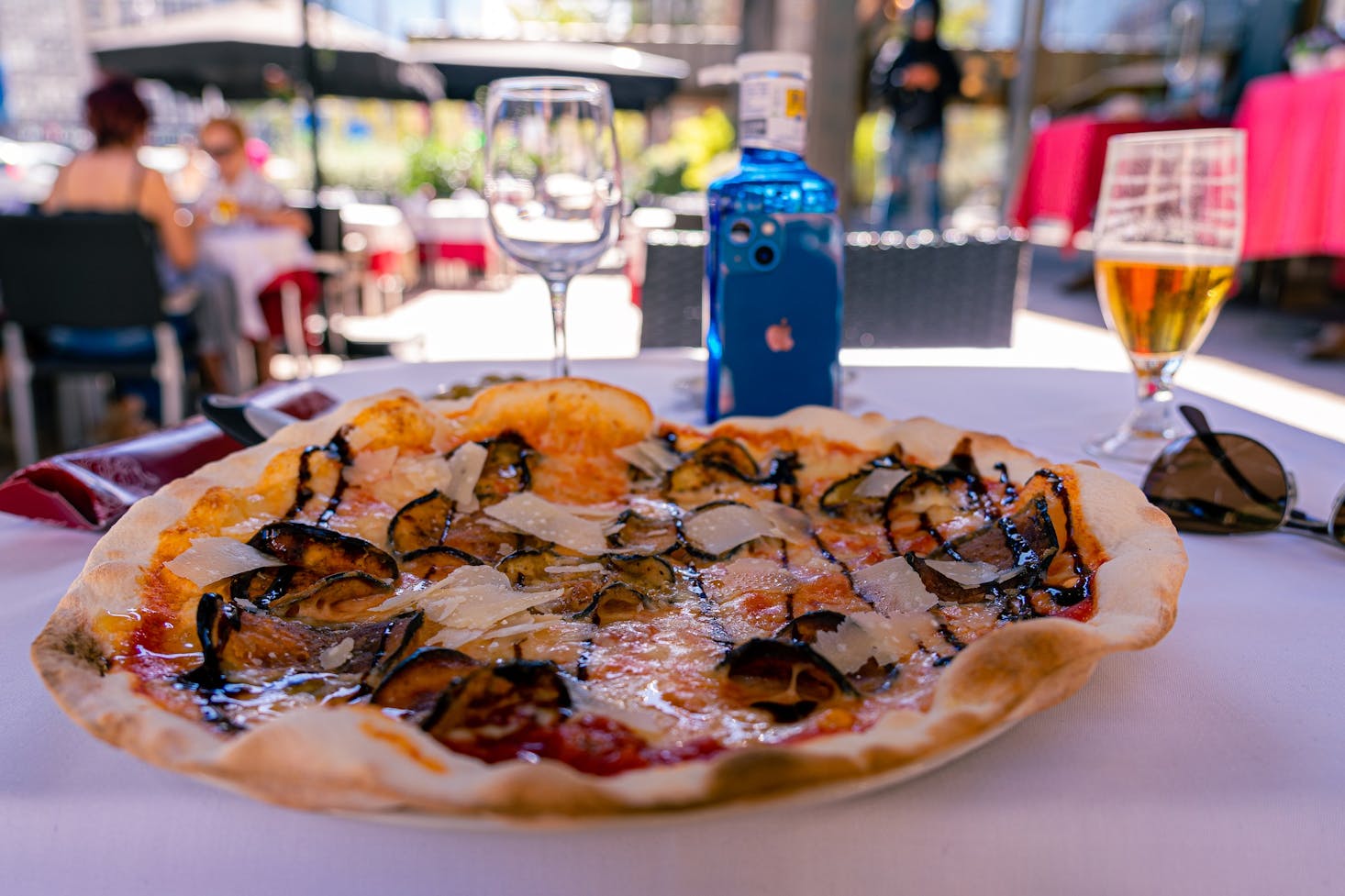
Madrid Food: Oreja a la Plancha
Oreja a la Plancha or grilled pigs’ ears is another traditional food you don’t want to miss when you visit Madrid. It is made from sliced pigs’ ears or cut into cubes and grilled in olive oil. It may seem like a bizarre local delicacy you’ll only try on a dare, but once you try it, it’s pretty delicious food that’s crunchy on the outside due to the cartilage. For first-timers, pair this tapa dish with a cold beer.
In some areas, like the Basque region, this dish is served with a sauce made from red peppers, onions, garlic, and stock. But in Madrid, it typically comes with bacon and mushrooms, along with lemon wedges on the side. You can find it in some neighborhood taverns and the most authentic Madrid tapas bars.
Madrid Food: Cocido Madrileño
If you’re wondering what to eat in Madrid on a cold winter day, try Cocido Madrileño. This classic Madrileñian stew is one of the capital's famous food that’s been a part of the region’s gastronomy. It’s a rich, filling dish especially identified with this city capital that makes excellent use of the bounty of the agricultural plateau surrounding the area.
The basic ingredients of this stew are meats, legumes, and vegetables cooked in a savory broth. Legumes are essential, but you can also add cabbage, carrots, green beans, and turnips. Some home cooks add beef or chicken, but pork is the usual protein. The ingredients may vary depending on who’s making the stew, but it will always be hearty and warming.
Cocido Madrileño is regularly served on special occasions and at family gatherings. However, you’ll also find it on the menu at numerous restaurants. It often arrives in three courses called tres vuelcos or in two rounds. When the legumes, veggies, and meats are cooked, the broth is separated and used for soup, which will be your first course. The rest of the ingredients become your main dish.
There’s no single story about its origin. Still, many believe it can be traced back to medieval-period Castilla La Mancha. According to food historians, this one-pot dish eventually evolved from a dish known as olla podrida Manchega. However, it was not named Cocido Madrileño until the seventeenth century.
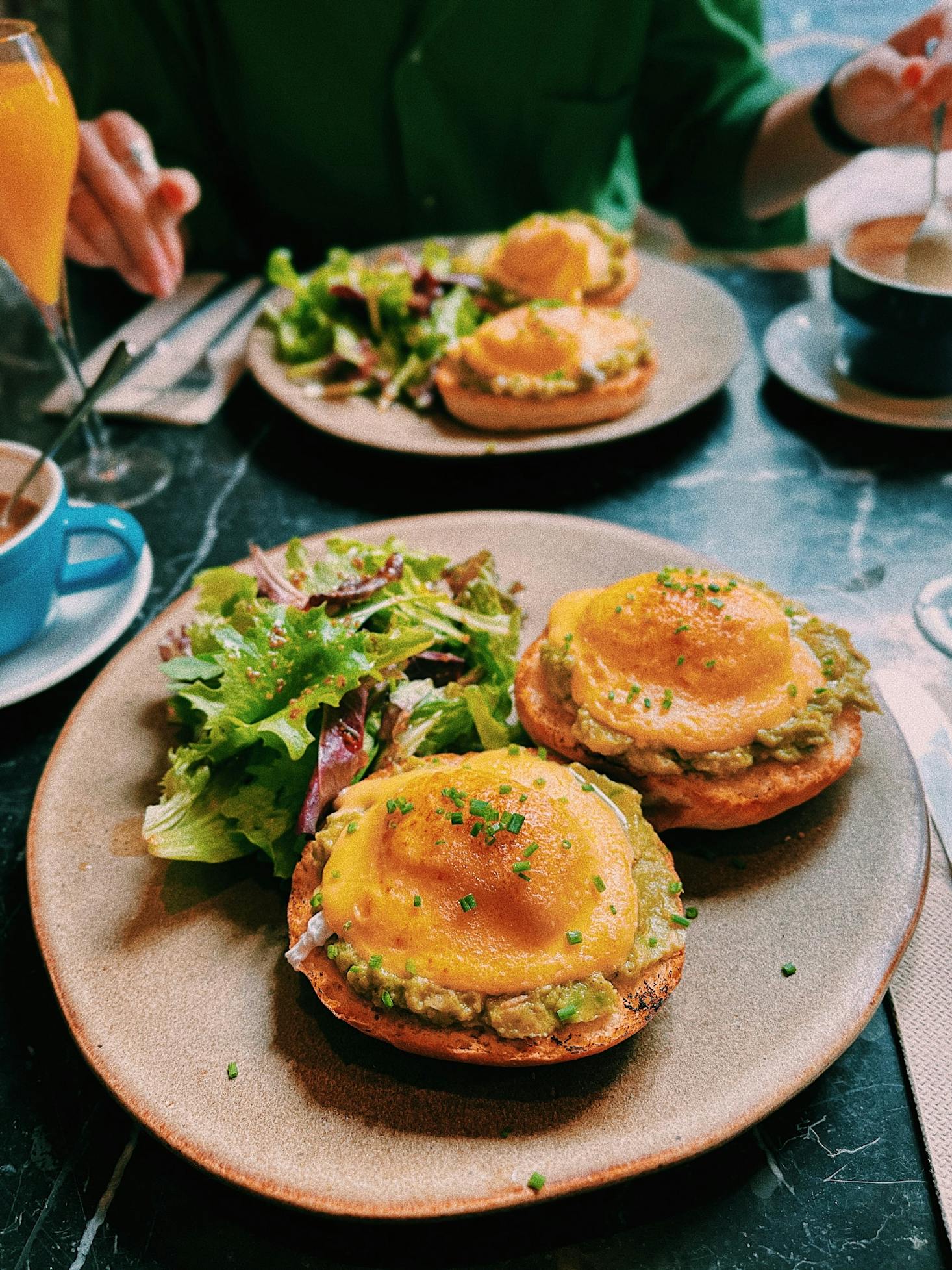
Madrid Food: Churros con Chocolate
For an energy-booster treat in Madrid, try the sweet churros con chocolate. It’s a traditional Spanish snack made from light choux pastry mix, fried and coated in a mixture of sugar and cinnamon. Then, it is dipped in piping hot chocolate sauce for a delicious combo.
Churros con chocolate is simple and easy to make at home. It goes well with your favorite street food in Madrid. You won’t have trouble finding it when strolling around the city, as multiple vendors on crowded streets sell all varieties of this fried treat any time of the day and night.
But if you want to try some of the best churros in this Spanish capital, check out the Chocolatería San Ginés at C. Pasadizo de San Ginés. It’s a chocolate café founded in 1894, known for its churros con chocolate. It’s a stone’s throw away from the Plaza Mayor, making it a perfect stop when exploring the historical attractions around the city center.
Madrid Food: Rosquillas de Santa Clara
Another delightful treat for sweet-toothed travelers is the Rosquillas de Santa Clara. This Spanish doughnut is traditionally prepared during the feast of San Isidor but is now an everyday favorite in cafes and bakeries. It’s one of the delicious varieties of Rosquillas that comes from a recipe by the nuns of Santa Clara. It is believed that the nuns made this doughnut famous in the 15th century and made it to raise money for charity.
Other versions are covered with a mix of lemon, egg, and sugar or contain icing sugar and almonds. But the Rosquillas de Santa Clara adds a dry meringue on top, making it crispy and sweet. It’s a staple on the feast of San Isidor, Madrid’s patron saint.
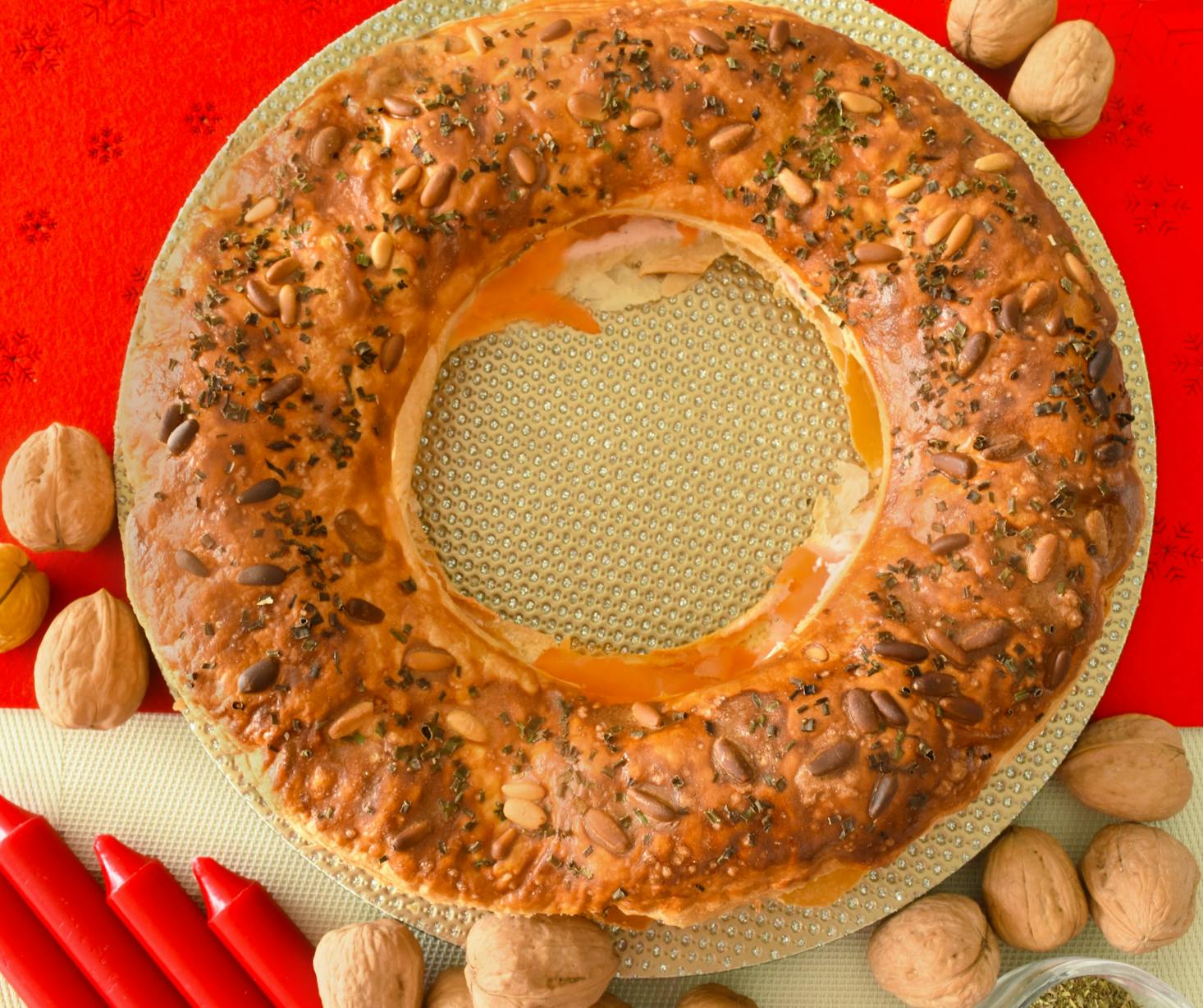
Madrid Food: Caracoles a la Madrilena
No Madrid food tours will be complete without tasting Caracoles a la Madrilena or Madrid-style snails. It’s one of the unique traditional foods you can find in the city’s taverns and bars. It is typically served in a clay pot, accompanied by a glass of red wine or beer.
Sadly, Madrid-style snails are gradually disappearing from the restaurant scene and even from homes where they’re commonly prepared. They still exist in bars, but they’re not as common as other traditional Spanish cuisines, so make sure you try Caracoles a la Madrilena while it’s still served in the city.
If you want to cook your version of this dish, you can use field snails or farmed snails. With a rich sauce with chorizo, ham, and a bit of spice for a light kick, it makes a warm delicacy on cold winters.
Madrid Food: Gazpacho
Gazpacho is a classic cold soup you’ll enjoy in the sweltering Madrid summer. It’s a Spanish cuisine from Andalusia but is much-loved in Madrid. This ancient dish was mentioned in Roman and Greek literature. However, modern versions contain green peppers and tomatoes, two of its main ingredients that weren’t brought to the country until the 16th century.
Traditionally, gazpacho is made with red onion, garlic, peppers, fresh tomatoes, and cucumbers. The tomatoes must be very ripe to maximize their flavors and color. Other main players in the soup are vinegar and olive oil. You can enjoy it with bread and homemade tortilla chips or serve it with your favorite fresh fruits.

Spanish Cuisine
Though a central area and the biggest city in Spain, Madrid has not forgotten its culinary roots and traditions. Its classic deep-fried snacks and more hearty dishes are combined with international foods to cater to every discerning eater.
And no matter what part of the city you go to, every corner offers a culinary adventure. From the historical city areas near the Plaza Mayor and the Royal Palace of Madrid to the glitzy Salamanca district, where you’ll find the Mercado de la Paz, there’s always something to tickle your palate.
If you’re feeling guilty about overindulging during your food tour, don’t despair! The city features spectacular natural attractions that will inspire you to go out and exercise. You can take advantage of nature walks and the best hikes in Madrid for a great cardio workout while enjoying fantastic views.

Love discounts and traveling?
Sign up for our newsletter and get 10% off your next booking.
